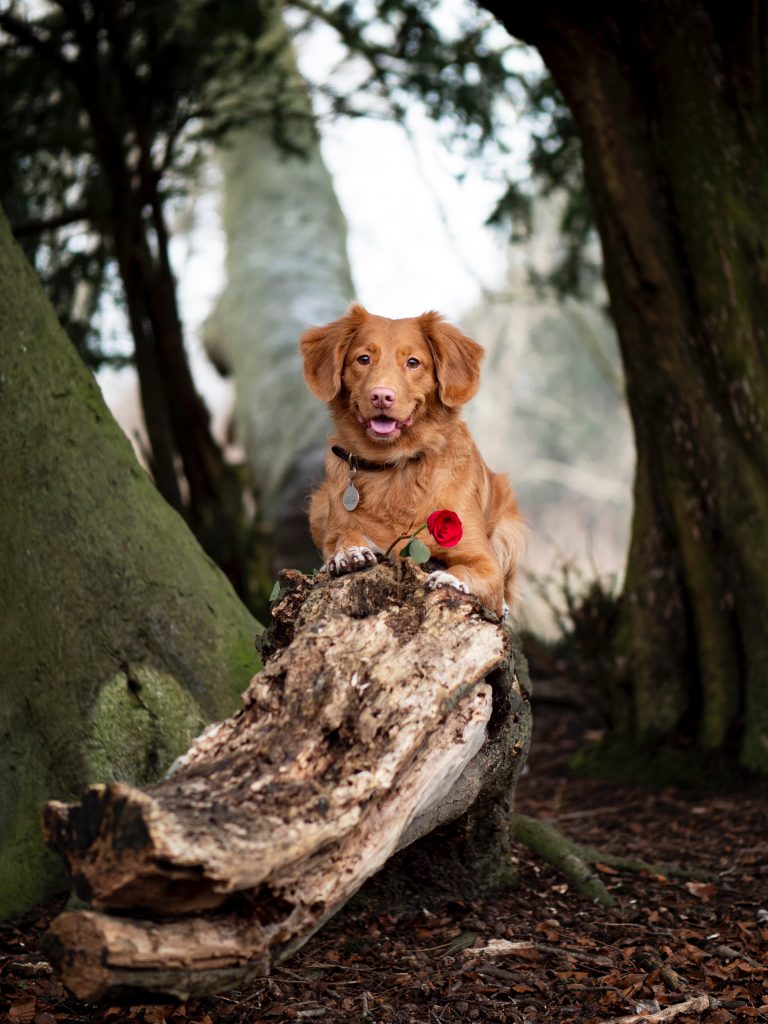This time of year we’re all pretty loved-up! Valentine’s Day is a time for love, whether that’s romantic love, family love, or the love you feel for your pet. But are you enough for your dog? Do they need somebody to love apart from you?
Dogs are Social Creatures

Dogs are social creatures. That is, they descend from creatures that live in family groups, they work together as a pack, they have developed complex communication techniques to allow everybody to get on, and they actually need social input to be happy. For many adult dogs, the social input can be solely or mostly from humans- they’re happy having social contact, even from a different species. Some dogs even prefer this- if they haven’t learnt the correct communication with other dogs, or struggle to read social signs, they may feel more comfortable with people rather than their own kind. For some dogs, particularly breeds that have been bred for cooperative hunting in groups, they do seem to prefer the support and affection of another dog to human contact.
Signs That Your Dog Could be Lonely
Have you wondered whether your dog might be a bit lonely? If you dread leaving your dog alone because of the mess they might make, chances are you’re dealing with a dog who suffers with separation anxiety, an extreme form of loneliness. If every time you leave the house, your dog is tearing up the carpet, chewing holes indoors, or destroying shoes, they could be feeling anxious about being left alone. Less severe forms include dogs that whine or cry when left alone. These dogs may benefit from having a companion!
Things to Consider When You Get a New Dog
Does My Dog Like Other Dogs?
Not all dogs want a doggy companion. Watch how your dog interacts with other dogs when out and about- if they’re aggressive, or fearful, it’s likely having another dog in the house could be a worrying experience for them. If they seem to want to say hello and play, then they’ll be more open to the idea of having a new friend. If you think they’ll enjoy it, see if you can borrow a friend’s dog for a day or two to see how they get on. Check how your dog copes with having another dog in the house, in their bed, and near their food bowl- these are all things they’re going to have to learn to share!
Training and Socialisation
You need to put as much individual attention and effort into your second (and subsequent!) dogs as you did your first. It’s a common mistake people make- they think that they don’t need to socialise their dog because they’ve got one at home already. But dogs need to learn about communicating with dogs of all shapes and sizes- Shih Tzus communicate differently to Boxers, and your dog needs to learn it all. You also need to ensure you’re training and socialising your second dog without your first one being present. This is because you need the dog to bond with you, not just with your other dog. After all, if one of the dogs needs a stay in the hospital, you need your remaining dog to feel comfortable with you, rather than missing the ill dog. Training, walking and socialising them separately also ensures that neither of your dogs starts to use the other one as a crutch in social or scary situations. You need both dogs to be happy individuals, as well as happy together.
Gender, Age and Breed
Dogs, on the whole, get on with other dogs regardless of age, gender and breed. But it might be worth considering these before you make the leap. If your current pet is unneutered, don’t get an unneutered dog of the opposite sex, or make sure to neuter your dog first. If your dog is very old, consider what they’ll think of having a puppy come to live with them- it may be too much. And whilst most breeds get on absolutely fine, it’s worth considering whether your dog has positive or negative experiences with some breeds: my dog loves all black labs as she has friends that are black labs, but she’s always a bit cautious around Collies. She’s also tiny, and fast- I’d be cautious getting a sighthound in case she was mistaken for a hare! Another thing to think about with your dog’s breed is whether they have similar exercise requirements. Getting a young spaniel as your second dog if you have an aging terrier may make it very difficult to give your new pet the exercise they need, which can lead to problems such as obesity and boredom.
Temperament
Getting a dog that gets on with other dogs goes without saying. But it’s worth talking to rescue centres about finding a dog that suits your other dog’s temperament. If you have a lazy dog, get another lazy dog so they can curl up together and cuddle. If you have a playful dog, find a dog to match.
Adopt or Shop?
Whether you adopt an older dog, get a puppy from a rescue, or buy from a breeder is up to you. There are pros and cons to both adoption and shopping (read more in our blog ‘Is Adoption Right for You?’ here). Just make sure that wherever you get your new companion from, they’re healthy and up to date on preventatives like flea treatment and vaccinations- your first dog won’t thank you for bringing disease into the house!
Happy Valentine’s to you all!

